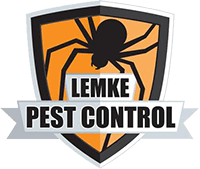Bedbugs do not always respond to home treatment. These apple seed-sized insects that feed on human blood are hard to kill, a function of their biology and behaviour. Bedbugs live in inaccessible areas deep within minute crevices, inside doors, under baseboards, beneath floorboards, and within mobile devices while not eating.Pest Control Chelmsford provides the best ways to control the pest in your garden. Bedbugs and their eggs are also easily transported on clothing and personal belongings, allowing infestations to spread quickly throughout a home or apartment building. Because of this combination of biology and behaviour, it is nearly impossible to eradicate a bedbug infestation with a single pest control treatment
Fruit Flies:
Fruit flies can be found breeding in mops, garbage cans, empty bottles, and produce such as bananas, tomatoes, melons, apples, strawberries, and filthy rags. When a fruit fly lays its eggs, the eggs hatch in as little as 24 hours. Fruit flies are recognized bacteria and disease carriers.
Termites:

Termites, also known as white ants, can devastate your home in a matter of months. The Sydney suburbs are especially vulnerable to termite activity, particularly subterranean termites. However, if you have a termite management plan up your sleeve, you will triumph over these home-munching pests. In the past, visual inspections were used to conduct inspections. New termite detection equipment, on the other hand, provides a more detailed report of termite activity. These techniques include the use of heat and moisture tracking systems, as well as thermal imaging cameras, to provide precise activity coordinates and movement directions. This means that pest controllers can precisely target problem areas.
Carpenter Ants:
Carpenter ants are not only unsightly for homeowners. They leave messes as well as structural and other destruction in the homes where they live. Carpenter ants inflict disruption as a result of nesting. Worker ants excavate galleries in which queens lay eggs and young ants create. You could have one or more nests in or near your house. The possible harm you may sustain is determined by the number of nests found inside the system and the length of time the infestation has been active. When the number of individual ants inside a colony increases, so does their spread through the wood and the amount of harm they do.
Millipedes:
Millipedes do not bite or sting, and they do not damage preserved food, buildings, or furniture. However, certain millipede species excrete a protective fluid that irritates the skin of people who touch or come into contact with such harmful millipede species. The plan’s non-chemical elements would prioritize avoiding rodents from entering the home and reducing suitable environments. Sealing around doors, walls, holes, openings, and crevices, as well as reducing moist areas that encourage millipede survival, are several particular activities. For example, the strategy may suggest minimizing the amount of mulch, rocks, or debris that is likely to cause damp areas. The plan’s non-chemical elements would prioritize avoiding rodents from entering the home and reducing suitable environments. Sealing around doors, walls, holes, openings, and crevices, as well as reducing moist areas that encourage millipede survival, are several particular activities. Millipedes sometimes migrate in the fall. They leave their natural habitat. Scientists believe they are attempting to prepare for winter. However, millipedes have been observed migrating after their ecosystem has been flooded by heavy rain. Millipedes sometimes make their way into homes during these migrations.
